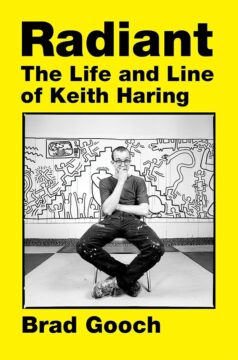Morgan Meis at The Easel:
 The impact of this work probably has nothing to do with whether it is high art masquerading as low art or low art masquerading as high art. Haring himself never seemed particularly interested in those divisions anyway. He liked Dubuffet and Alechinsky in exactly the same way that he liked cartoons and street graffiti. Pace Kuspit, I don’t think you can say that Haring’s art was fundamentally populist with a dash of high art influence to keep it from getting stale.
The impact of this work probably has nothing to do with whether it is high art masquerading as low art or low art masquerading as high art. Haring himself never seemed particularly interested in those divisions anyway. He liked Dubuffet and Alechinsky in exactly the same way that he liked cartoons and street graffiti. Pace Kuspit, I don’t think you can say that Haring’s art was fundamentally populist with a dash of high art influence to keep it from getting stale.
Most of the art critics, in short, were getting themselves tied in knots trying to answer a question that never actually applied to what Haring was doing. More interesting, I think, are the raw reactions from the majority of people who were experiencing Haring’s work—that is, the people who stumbled upon Haring’s babies and dogs and weird creatures and UFOs on the walls of New York City. Gooch quotes actress and performance artist Ann Magnuson as saying, “Keith’s subway panels greeted you like welcome mats at each downtown stop. Personalized petroglyphs that spelled relief from the piss-soaked wreckage of the Lower East Side.” Haring himself was often amazed that so few people messed with or defaced his drawings, as happened with so much of the public art and graffiti of the time. Haring noted that “the drawings seemed to have this protective power that prevented people from destroying them.” This power, according to Haring, was a “protective nimbus” that had something to do with the images being a form of “primitive code.”
more here.
Enjoying the content on 3QD? Help keep us going by donating now.
